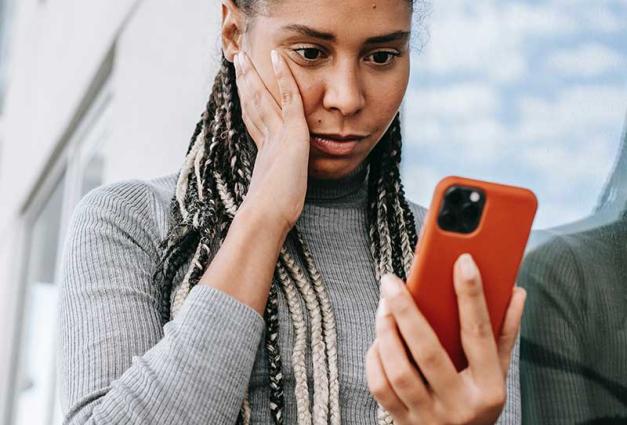“Collect seven red apples directly from an apple tree. In the morning, before eating anything, peel the apples, eat them and save the peel. Right before going to bed, make a tea with the peel.”
– Brazilian remedy for quitting smoking
In many parts of the world, belief in witchcraft and magic is alive and well, with people relying on rituals for everything from treating asthma to curbing infidelity. Even if you don’t believe in witchcraft outside of Halloween, chances are you believe in some form of the supernatural, even if just the power of the ritual – whether wearing a lucky jersey to bestow luck on your favorite sports team or praying for a sick friend.
From a young age, many people develop beliefs in the supernatural, often through participation in rituals, to influence events in the natural world. By studying real-life Brazilian rituals, Cristine Legare and André Souza of the University of Texas at Austin were able to create their own rituals to examine why people think they work. They are now finding that rituals help people gain a sense of control over their environment.
“The content of supernatural belief systems varies quite dramatically across cultures, but the underlying structure of supernatural belief systems is remarkably consistent,” Legare says. “Supernatural beliefs are constrained by our universal psychological system and thus are remarkably psychologically ‘natural.’”
Common characteristics of ritual have evolved over time based on intuitive concepts of causal reasoning, Legare says. Because rituals usually lack explicit information about physical causation – for example, there is no cause and effect between rubbing a ceramic pot and making it rain – people rely on intuitive causal principles to evaluate how well they work . These concepts include repetition and many, detailed procedural steps, as Legare will describe in an upcoming presentation at the SPSP annual meeting in Austin in February.
Legare and Souza visited Brazil, where people use rituals called “simpatias” for treating a variety of illnesses and problems. She and Souza analyzed the existing simpatias to then develop their own simpatias.
By creating experimental rituals, they could then test which aspects of the simpatias led people to believe that they work. They tested the simpatias with people recruited from health clinics in the city of Belo Horizonte in southeastern Brazil and replicated the results with university students in the United States. Here is a simpatia that they designed, for example, to test how specifying a time frame affects people’s evaluations of the ritual:
In the first day of last quarter phase of the moon, take the milk from a coconut and give it to the affected person to drink. After that, ask the person to spit three times in the hole made in the coconut. Following this, light up a brand-new white candle and drop the wax around the hole until the hole is sealed. Take the coconut to a far away beach or river.
In a study published in Cognition in 2012, Legare and Souza found that among other factors, specificity of the procedures was a significant determinant of whether people thought the simpatia was effective. “In the absence of information about causal mechanisms, our research demonstrates that intuitive biases in causal reasoning – such as repetition, number of procedural steps, and the specificity of procedural detail – are used to evaluate the efficacy of rituals,” Legare says.
In more recent work in Cognitive Science, Legare and Souza used a priming task that consisted of words associated with randomness before asking participants to evaluate the efficacy of simpatias. They found that people primed with randomness – i.e., a lack of control – were more likely to rate simpatias as effective. “We propose that rituals provide a means for coping with the aversive feelings associated with lack of control,” they wrote.
Importantly, Legare says that contrary to popular belief popular belief, supernatural explanations and scientific reasoning are not incompatible from a psychological perspective. “One of the most remarkable characteristics of human cognition is the capacity to use supernatural and scientific reasoning to explain the world around us,” she says. “The process by which our shared cognitive system enables us to engage in sophisticated scientific reasoning on the one hand, and to entertain the prospect of an afterlife and supernatural powers on the other, intrigues me for both professional and personal reasons.”
The same individuals use both natural and supernatural explanations to interpret the very same events. “We often use supernatural explanations to answer existentially arousing questions, such as ‘why me?’”
Legare first saw that phenomenon when she studied how rural and urban South African populations explain the causes of AIDS. She found that supernatural and biological explanations were distinct yet complementary. For example, biomedicine helped explain how a person contracted AIDS via a virus; whereas, witchcraft – a curse for example – explained why a person became infected with HIV.
“I am consistently surprised by how willing we are to consider multiple solutions to the same problem,” Legare says. “Rather than view our willingness to use both natural and supernatural remedies to treat problems as irrational behavior, I view this as deeply pragmatic and rooted in an attempt to exert control over our own lives.” The Brazilians she has studied are receptive not only to biomedical treatments but also to supplementary ritual-based treatments.
“Our ability to think about the supernatural is rooted in processes that start in infancy,” Legare says. And new evidence indicates that supernatural explanations often increase rather than decrease with age, she says. “Reasoning about supernatural phenomena is an integral and enduring aspect of human cognition.”
Legare will give her presentation “Evidence from the Supernatural: Reasoning about Ritual Efficacy,” on Friday, Feb. 14, in Symposium S-D6: “Rituals Make Life Better — By Enhancing Consumption, Communicating Social Norms, Treating Illness, and Relieving Grief” at the SPSP annual meeting in Austin, Feb. 13-15, 2014.




